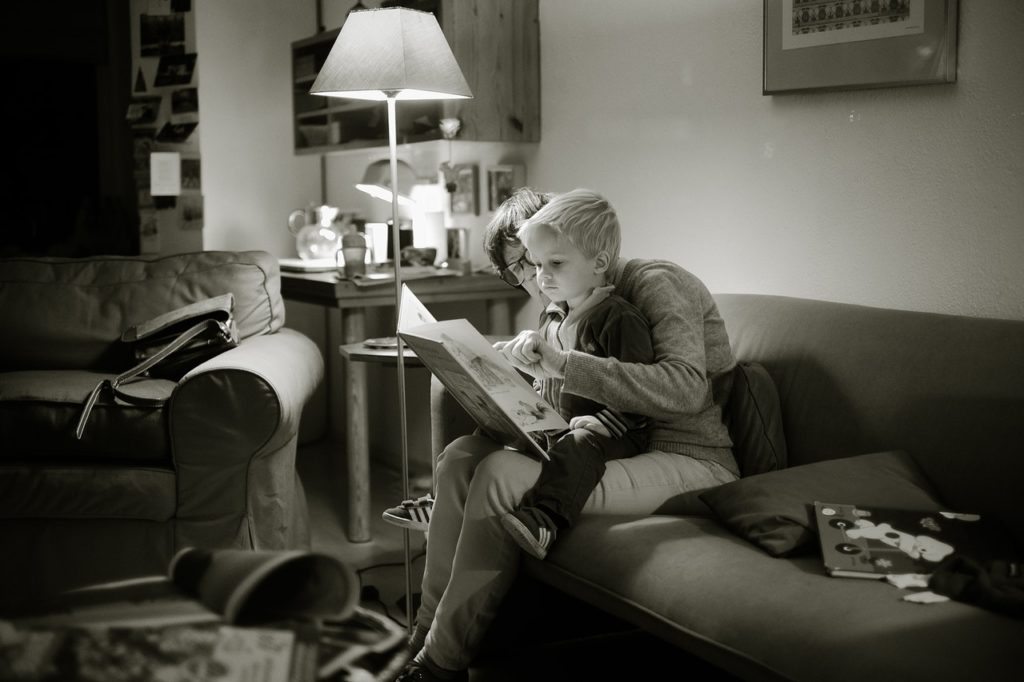
The Wait of the World: Helping Children Flex Their Emotional Muscles
Waiting is rubbish, especially when you’re a kid. Very few young children respond well when adults answer their demands with, “Not now. Just be patient.” Infants and toddlers are notorious for being lousy waiters, but by the time they enter the preschool and kindergarten years, many show more consistent frustration tolerance and commensurate waiting power. Naturally, parents want to know, “How do they get there, and how can I speed them up?” But before we can help them reach the finish line, we first have to locate their starting point.
Waiting = Suffering
Little kids often feel some measure of emotional pain when they have to wait, the proof being in their scrunched up, teary, screaming faces. (Of course, some would say that these cranky protests are more about attention-seeking and manipulation than expressions of genuine, albeit temporary, suffering. I’ll take that up in another post. For the time being, let’s assume that these demonstrations are legit). But why would it feel so awful to chill out or focus on something else for a minute? There are many reasons why little kids suck at waiting, but I’m going to touch on just two for now: consciousness and time.
"The central deterrent to [the child's] voyages into the local unknown is her equally intense need for safety and emotional connection with her caregivers."
In her TED talk, developmental psychologist Alison Gopnik describes baby consciousness as “being in love in Paris for the first time after you’ve had three double-espressos.” The more the child grows aware of people and her surroundings, the hungrier she becomes early on. She learns at a feverish pace, as her desire and curiosity blossom. In other words, this little girl is juiced, amped, hyped, stoked, pumped, electrified, and exhilarated to be exploring her world. The central deterrent to her voyages into the local unknown is her equally intense need for safety and emotional connection with her caregivers. The experience of these normal yet contradictory needs alone causes distress, and when you add in parental demands for emotional maturity (i.e., “Just wait a minute! Jeez!”) a child’s frequent inability to comply starts to make sense.
What’s more, children’s sense of time is very underdeveloped compared to an adult's. Yes, grown-ups can attest to feeling variation in the passage of time depending on the activity (Think: Time flies when you’re having fun), but most of us perceive time to be fairly consistent, or at least predictable. Because we have considerable control over the daily events in our lives, we are mostly able to count on certain things happening at certain times (e.g., eating lunch at noon). This strengthens our ability to wait.
It’s almost the opposite situation for little kids. They have little control over their lives, they struggle to make accurate predictions, and their sense of time is wackadoo. Two minutes may, in fact, feel like twenty when you’re a toddler and wanting a snack or waiting for a turn on the swing. Their brains have much more development ahead before waiting feels more bearable more often.
Heavy Lifting
Parents can nudge this development along by helping children flex their emotional muscles, a term popularized by psychoanalysts Jack and Kerry Kelly Novick. Emotional muscles are similar to their physical counterparts, only the heavy lifting involves things like tolerating frustration, being resilient, and feeling strong enough to wait. One way parents promote these abilities in their children is by giving them appropriate, natural opportunities to practice waiting. Examples abound:
- Having a simple playing ritual when changing your infant’s diaper to help her tolerate being on her back.
- Holding your toddler while she waits to take a turn on the slide at the park.
- Setting the timer for 5 minutes to help your kindergartner and preschooler alternate turns with the new toy.
- Having your child do an activity near you (e.g., kneading some Play-Dough, building with Legos, etc.) as you finish writing an important email.
- Asking your preschooler to not interrupt and wait until you finish a brief conversation with a friend.
From the examples we can see a few different tools, including using a timer and managing your involvement in the child’s waiting. The younger the child the more he may need the parents to provide physical support (e.g., sitting on the parent’s lap, being held, etc.) and some soothing words. The timer is handy because, with practice, it introduces a sense of fairness and predictability, both of which boost children’s pleasure-delaying abilities. An added benefit is that the timer can take some of the heat off the parent because the child’s attention goes towards the passage of time and away from perceiving the parent as unfair and cruel. Some parents may be surprised to see that their little ones not only adjust to using the timer but also appear to take pride in their hard-earned ability to wait.
"Emotional muscles are similar to their physical counterparts, only the heavy lifting involves things like tolerating frustration, being resilient, and feeling strong enough to wait."
Just be thoughtful about the timer and avoid setting it for long periods. Experiment to see what lengths work best for your particular kids. And be sure to reflect back on the outcome and tell your kids what they were able to accomplish: “Hey! You waited the whole 4 minutes. It looks like you are strong enough to wait,” or “Oh, I can see that you’re mad again. I know it’s hard to wait 15 minutes when you’re little. Maybe next time I’ll set the alarm for a shorter time.”
A final point: If you have read some of my other posts, then it won’t come as a surprise to you that I also recommend that parents first commit to exercising their own emotional muscles. As our children grow, so do we. And as we grow, their gains become more stable. What kinds of heavy lifting can you do to remind yourself and show your kids that waiting never lasts?


